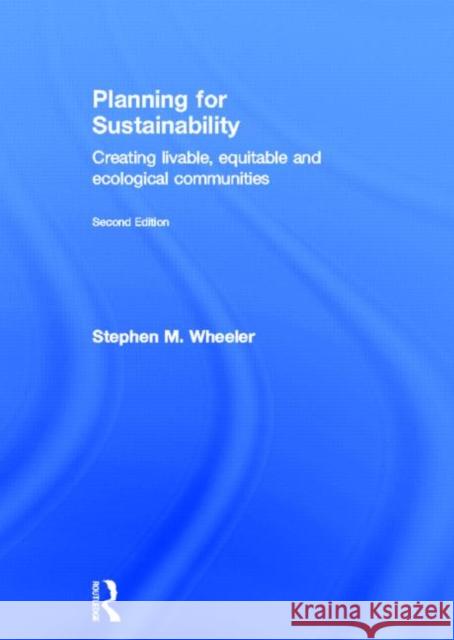Planning for Sustainability: Creating Livable, Equitable and Ecological Communities » książka
Planning for Sustainability: Creating Livable, Equitable and Ecological Communities
ISBN-13: 9780415809887 / Angielski / Twarda / 2013 / 424 str.
Planning for Sustainability: Creating Livable, Equitable and Ecological Communities
ISBN-13: 9780415809887 / Angielski / Twarda / 2013 / 424 str.
(netto: 740,24 VAT: 5%)
Najniższa cena z 30 dni: 772,46
ok. 22 dni roboczych
Dostawa w 2026 r.
Darmowa dostawa!
In response to threats such as global warming, interest continues to grow worldwide in sustainable development development that can improve the long-term health of human and ecological systems. The question of how human communities can plan for a long existence on a small planet touches a great many professions and is of interest to readers from all walks of life.
Planning for Sustainability presents a wide-ranging, intellectually well-grounded, and accessible introduction to the concept of planning for more sustainable and livable communities. The text explores topics such as how more compact, walkable cities and towns might be created, how local ecosystems can be restored, how social inequalities might be reduced, how greenhouse gas emissions might be lowered, and how more sustainable forms of economic development can be brought about. Many photographs, graphics, and examples help illustrate key points.
Building upon past schools of planning theory, Planning for Sustainability lays out a sustainability planning framework that pays special attention to the rapidly evolving institutions and power structures of a globalizing world. By considering in turn each scale of planning international, national, regional, municipal, neighborhood, and site and building the book illustrates how sustainability initiatives at different levels can interrelate. The author argues that only by weaving together planning initiatives and institutions at different scales, and by integrating efforts across disciplines, can we move towards long-term human and ecological well-being.
The Second Edition will update material throughout the book, incorporate new material related to climate change, urban food systems, relationships between public health and the urban environment, and international development in China, India, and elsewhere. A new section containing a dozen short chapters considers sustainability planning topics. A new chapter also looks at the main elements of the sustainability planning approach, in particular skills of understanding context and determining sustainability priorities.











